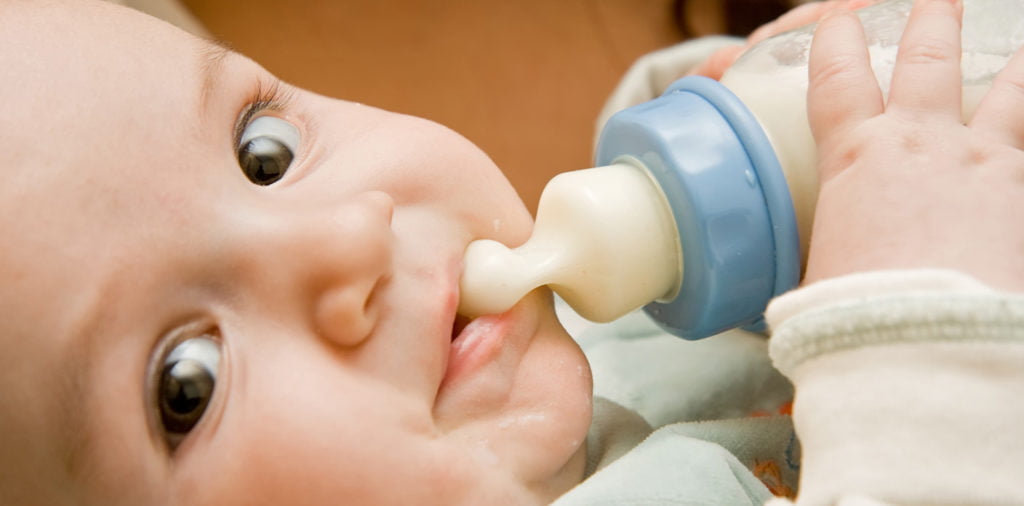Breast milk can be left out at room temperature for up to four hours after pumping.Breastfeeding is a beautiful experience that provides countless benefits to both the mother and the baby.
Breast milk contains all the essential nutrients, minerals, and antibodies required for the proper growth and development of the baby. As a breastfeeding mother, it is crucial to have a good understanding of how to store and handle breast milk to ensure its safety and freshness. One common question that most new mothers ask is how long breast milk can stay out after pumping. The answer to this question is essential to prevent the risk of bacterial growth and ensure that the baby gets fresh breast milk every time. In this article, we will discuss how long breast milk can stay out and the proper storage methods for maintaining its quality and safety.


Credit: mamaschoice.sg
The Shelf Life Of Breast Milk
Breast milk is a highly nutritious food for infants. it provides all the necessary nutrients required for healthy growth and development. however, once breast milk is pumped, it’s crucial to pay attention to its shelf life to ensure your baby gets the most out of it. in this blog post, we’ll discuss the shelf life of breast milk, factors that affect it, and how to store it to maintain its quality.
Factors That Affect The Shelf Life Of Breast Milk
Several factors may affect the shelf life of breast milk, including:
- Bacteria: breast milk can contain bacteria. thus, it’s essential to wash your hands and sterilize all the equipment used in pumping to prevent bacterial contamination.
- Temperature: exposure to varying temperatures can affect the shelf life of breast milk. it’s advisable to store breast milk at the recommended temperature to maintain its quality.
- Duration of storage: the longer breast milk is stored, the less nutritious it may become.
The Recommended Storage Times For Freshly Expressed Breast Milk
Thoroughly washed and sterilized containers are necessary for storing freshly expressed breast milk at optimum quality. these are the recommended storage times:
- At room temperature (77°f or 25°c): fresh breast milk can remain at room temperature for up to four hours.
- In the refrigerator (40°f or 4°c): fresh breast milk can remain in the refrigerator for up to four days.
- In the freezer: fresh breast milk can remain in the freezer compartment of a refrigerator for up to six months. in contrast, in a deep freezer, it can last up to twelve months.
Whenever possible, use the oldest milk first and be sure to label and date each container with pump time and date.
The Safe Duration For Leaving Breast Milk Out At Room Temperature
Breast milk can stay out at room temperature safely for up to four hours. anything beyond that, bacteria may begin to develop, increasing the risk of it becoming contaminated. as such, it’s crucial to refrigerate or freeze excess milk immediately to maintain its quality. conclusion breast milk is an essential food for your baby, and it’s crucial to pay attention to its shelf life. by following the recommended guidelines for storage times, you can ensure your baby is getting the most nutritious milk possible. remember to always label and date your pumped milk containers and take care to use the oldest milk first. with these tips, you can ensure your baby gets all the benefits of healthy breast milk.
Why Leaving Breast Milk Out For Too Long Isn’T Recommended
Breast milk is a highly nutritious food source for newborns, and it is essential to store it properly to prevent spoilage and bacterial growth. as a new mom, you may have questions about how long you can leave breast milk out after pumping. this blog post will highlight why leaving breast milk out for too long is not recommended and the risks involved.
The Risk Of Bacterial Growth
Breast milk offers vital protection to newborns as it contains antibodies and other essential nutrients. however, leaving milk out for too long can lead to bacterial growth, and the milk may no longer be suitable for your baby to consume. here are some key points to keep in mind:
- Bacteria thrive in warm temperatures, so leaving breast milk at room temperature for more than four hours is not recommended.
- The risk of bacterial growth increases with higher temperatures, so it is necessary to store breast milk in a cool, dark place, such as a fridge.
- Using sterile containers to store breast milk can also reduce the risk of bacterial contamination.
The Consequences Of Babies Consuming Spoiled Breast Milk
Spoiled breast milk can have adverse effects on your baby’s health. as mentioned earlier, bacteria thrive in warm temperatures, and if the milk is left out at room temperature for too long, it can cause bacterial growth and spoilage, leading to:
- Diarrhea
- Vomiting
- Stomach upset
- Dehydration
It is crucial to discard any milk that has spoiled, as it may not have the necessary nutrients and antibodies required for your baby’s development. here are some signs to look out for:
How To Tell If Breast Milk Has Gone Bad:
- A sour or rancid smell
- Discoloration or separation of the milk
- Unusual texture or consistency
- Sour or metallic taste
If you notice any of these changes, it’s best to discard the milk immediately. ultimately, it is essential to store and handle breast milk appropriately to ensure that it is safe and healthy for your newborn to consume. breast milk is a valuable source of nutrition for your baby. however, it is vital to know how to store and handle it carefully to prevent bacterial contamination. leaving breast milk out for too long can lead to spoilage and bacterial growth, leading to health implications. ensure that you check for signs that the milk has gone bad and discard it immediately.
How To Store Breast Milk Safely
Breast milk is a precious commodity, and proper storage is essential to keep it safe for your little one. it’s crucial to know how long breast milk can be stored after pumping and how to store it safely. in this post, we will focus on the subheading, “how to store breast milk safely.” let’s dive in!
Proper Sanitation Techniques For Breast Milk Storage
To ensure safe storage of breast milk, it’s essential to follow proper sanitation techniques. here are some essential points to consider:
- Always wash your hands thoroughly before pumping or handling breast milk.
- Use clean sterilized breast pump equipment.
- Sanitize all the storage containers that will come into contact with breast milk before and after each use.
- Store breast milk in clean containers.
Tips For Choosing Appropriate Breast Milk Storage Containers
Choosing the right breast milk storage containers is critical to ensure the longevity and safety of the milk. here are some pointers to keep in mind:
- Use glass, hard plastic, or bpa-free plastic bags specifically designed for storing breast milk.
- Choose containers with a tight-fitting lid to prevent contamination.
- Avoid using regular plastic bags, as they can easily break or leak.
- Consider the size of the container – smaller containers are ideal for storing small amounts of milk, while larger containers are suitable for larger amounts.
How To Label And Organize Breast Milk In The Fridge Or Freezer
Organizing and labeling breast milk correctly will help you keep track of your stash, it’s age, and when it needs to be used. here are some tips:
- Label the containers with the date and time the milk was expressed.
- Store the oldest milk in the front to ensure that it gets used first.
- Use a separate container for each pumping session, and don’t mix freshly expressed milk with previously refrigerated or frozen milk.
- Consider using transparent containers or bags to help you keep track of the amount and age of milk.
Breast milk is precious, and proper storage is critical to maintaining its quality and nutrients. following these tips for sanitation techniques, container choices, and labeling and organizing will ensure that your breast milk stays safe, fresh, and available when needed.
How To Warm Breast Milk Safely
Breast milk provides infants with essential nutrients that help them grow, build immunity, and stay healthy. pumping breast milk is a popular choice for many mothers, providing convenience, flexibility, and allowing others to feed the baby. however, it’s essential to know how long breast milk can stay out after pumping and how to warm it up safely. in this section, we’ll discuss how to warm breast milk and the recommended methods for thawing frozen breast milk in a bottle warmer or warm water.
The Recommended Methods For Thawing Frozen Breast Milk
- Putting it in the fridge: this is the safest method as it maintains the milk’s nutrients, flavor, and consistency. place the frozen milk in the fridge and let it thaw for 12-24 hours, depending on the amount of milk.
- Placing it in a warm water bath: put the frozen breast milk container or bag in a bowl or basin of warm water. replace the warm water every 30 minutes until the milk is thawed. once it’s thawed, warm it up before feeding.
- Using a bottle warmer: bottle warmers are a convenient and easy way to thaw and heat breast milk. follow the manufacturer’s instructions for the recommended settings.
How To Safely Warm Breast Milk In A Bottle Warmer Or Warm Water
- Using a bottle warmer: a bottle warmer is a great way to warm breast milk. follow the instructions provided by the manufacturer to avoid overheating.
- Placing it in warm water: this method involves placing the breast milk container or bag in a bowl of warm water (37-40°c) for a few minutes. you can test the temperature of the milk by placing a drop on your skin. it should feel warm, not hot. stir the milk to distribute the heat evenly.
- Avoid using a microwave: microwaving breast milk can destroy its nutrients, create hot spots, and potentially cause burns. though it may be convenient, it’s not worth the risks.
The Dangers Of Microwaving Breast Milk
Microwaving breast milk can cause a significant loss of nutrients, hot spots, and uneven heating, which can potentially burn the baby’s mouth and throat. additionally, microwaving breast milk can damage the milk’s natural enzymes and antibodies, making it less effective in providing immunity to the baby. always use recommended thawing and warming methods to ensure the breast milk remains safe and full of nutrients for your baby. breast milk is nature’s perfect food for an infant’s growth and development. proper handling, storing, and warming techniques ensure that your baby receives nourishing and safe milk. remember to thaw and warm breast milk correctly to preserve its nutritional value and to avoid any potential dangers.
Conclusion
Breast milk is a valuable source of nutrition for babies and it is understandable that moms want to preserve it as long as possible. Knowing how long breast milk can stay out after pumping is essential in ensuring the safety and quality of the milk. As a general rule, freshly pumped breast milk can be left at room temperature for up to 4 hours if the room is cool. If the room is warm, it is best to refrigerate the milk within an hour of pumping. Storing it in the refrigerator can extend its shelf life up to 4 days, while freezing it can preserve it for up to 6 months. However, moms with premature babies or babies with weakened immune systems should consult their healthcare provider for specific guidelines. Proper storage and handling of breast milk can ensure that it remains a healthy source of nourishment for your little one.
Frequently Asked Questions For How Long Can Breast Milk Stay Out After Pumping
How Long Can Fresh Breast Milk Stay Out After Pumping?
Fresh breast milk can stay out for up to four hours at room temperature (between 60-85°f). however, it’s best to refrigerate or freeze the milk as soon as possible after pumping.
Can Breast Milk That Has Been Previously Refrigerated Be Left Out?
No, it is not safe to leave breast milk that has been previously refrigerated out at room temperature. it should be used within four hours after being removed from the fridge.
Can You Reheat Breast Milk Multiple Times?
It is not recommended to reheat breast milk multiple times because heating it over and over again can destroy some of the nutrients it contains. warm it just enough so that it reaches the desired temperature.
How Long Can Thawed Breast Milk Be Left Out?
Thawed breast milk can stay out at room temperature for up to two hours. avoid refreezing thawed milk because it can cause the milk to spoil and lead to bacterial growth.



